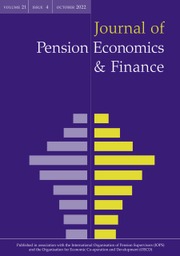No CrossRef data available.
Article contents
Household savings and shocks to occupational pension funds
Published online by Cambridge University Press: 31 March 2025
Abstract
Using household survey data linked to supervisory data of Dutch pension funds, we provide evidence of the increase in household savings caused by shocks to the financial position of pension funds. Our identification strategy exploits cross-sectional and time variations in pension funds’ funding ratios, which result from asset allocations and price corrections outside the control of fund members. The findings reveal that fluctuations in funding ratios significantly impact household savings, with a displacement effect above 40 percent. Lower funding ratios are associated with higher voluntary savings, driven primarily by members of pension funds with lower historical returns. Unlike earlier studies, this paper covers a long time span including three major economic crises, providing novel insights into the interaction between pension fund stability and individual saving behaviour.
- Type
- Article
- Information
- Copyright
- © The Author(s), 2025. Published by Cambridge University Press.


